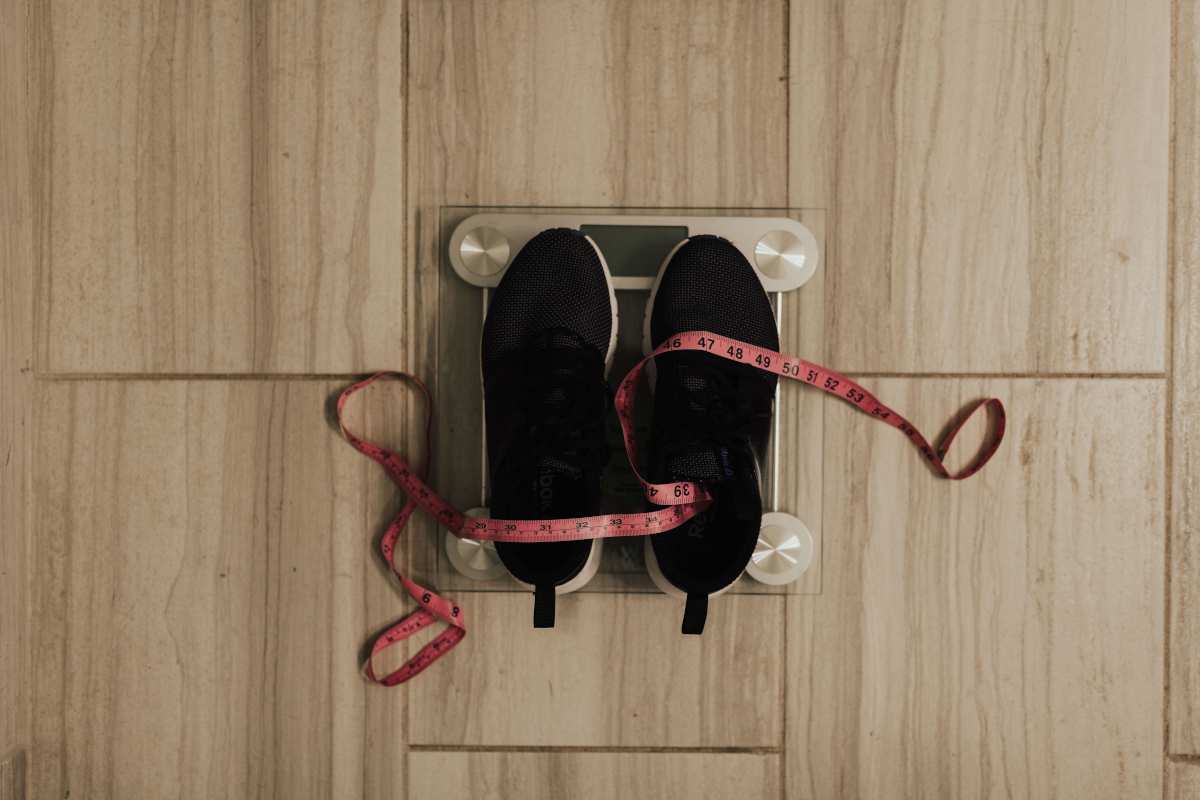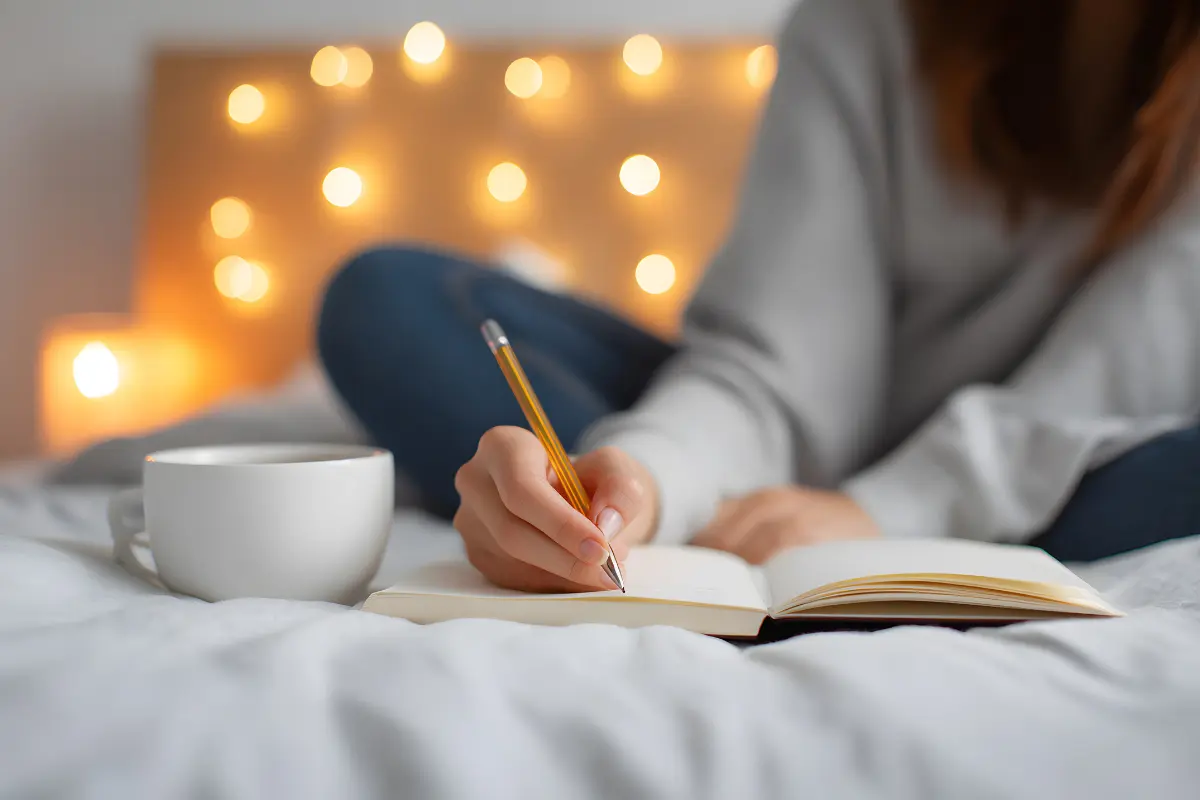
If you’ve been stuck in a cycle of dieting to maintain a lean physique, you might be missing out on some serious gains – both in muscle and energy. Today, we're diving deep into the world of reverse dieting strategy to help you break free from restrictive eating and unlock your full potential.
As 1:1 nutrition coaches, we’ve walked hundreds of clients through successful reverse diets based on their goals, activity, and body composition. We’re giving a little Reverse Dieting 101 so you can decide if reverse dieting is right for you, when to start thinking about it, and, best of all, how to reverse diet successfully.
Understanding Reverse Dieting Strategy
As we explore the concept of reverse dieting, let’s start with an analogy.
If you’ve ever owned a car, you know changing the oil every few months is essential. Even if your car seems to run smoothly without oil changes, it’ll be slower and less efficient. This is also true for our metabolism [1].
Advertisement
If you've been dieting for a while, you've seen results, but now you're feeling tired, your performance lags, and maybe you're even a little hangry. Sound familiar? This is where a reverse dieting strategy comes into play.
How to "Fix" Your Metabolism
Many people want to know how to “fix” or “heal” their metabolism after long periods of dieting. So, before diving deeper into reverse dieting, it’s essential to understand what metabolism is and how it works.
Your metabolism includes all processes by which your body converts food into energy. Your metabolic rate is the rate at which your body burns calories [2].
Did you know that if you remain in a calorie deficit (i.e. diet) for a long time, it can slow down your metabolic rate?
Here’s how it works: When you restrict your caloric intake, your body becomes more energy-efficient and requires fewer calories to maintain weight. The more you cut calories down, the more your metabolic rate will drop [2,6]. The body will even send signals encouraging you to eat more [3].
Advertisement
Fortunately, the opposite of this concept is true, too. If you restore your calories back to a normal range, your metabolic rate will increase. This is what people mean when they say, “Fix your metabolism.”
And that’s where reverse dieting comes in!
What is Reverse Dieting?
A reverse diet is exactly what it sounds like: a gradual increase to maintenance levels (or sometimes even higher) to increase metabolic rate [4].
In other words, a reverse diet could help you lose weight or maintain weight while eating more calories. It also helps with muscle maintenance (or even muscle gain) if performance is one of your top priorities.
The idea is that providing a slight caloric surplus could help to restore circulating hormone levels and energy expenditure toward pre-diet levels while closely matching energy intake to the recovering metabolic rate. The goal is to help minimize the amount of body fat gained during the process [4].
Advertisement
To simplify it even more: by eating more, you’ll move more, recover better, push harder in workouts, sleep better stress less, and all of this combined will lead to a higher metabolism and quicker, more efficient calorie burn.
Who Can Benefit from Reverse Dieting?
If you’re an athlete – and by that, I mean someone who prioritizes daily movement, hits the gym regularly, and cares about their performance – you can absolutely benefit! Think about it:
-
You've been in a calorie deficit for an extended period. Whether it was for a competition, a photoshoot, or just to lean out for summer, prolonged restriction can take a toll.
-
You're experiencing metabolic slowdown. Feeling sluggish, cold, or noticing decreased energy levels? Your metabolism might need a little boost.
-
You want to eat more without gaining fat. Reverse dieting strategy allows you to increase your calorie intake gradually, giving your body time to adapt and potentially maintain your lean physique while eating more.
Advertisement
Signs You Need to Reverse Diet
At WAG Nutrition, our clients often ask, “How will I know when it is time to reverse my diet? "
Many things will cue your coach into knowing it’s about that time. Here are a few signs your body could give you that it’s time to reverse diet and add more calories to your routine:
- Weight loss stops or significantly slows
- Hunger spikes to unmanageable levels
- You see a huge dip in performance and/or recovery
- You’ve reached your weight loss goal and want to shift focus to increasing calories and improving performance
The last one is the moneymaker, and this is where we aim to get our clients. After all, living on low calories forever is no fun (and not good for your long-term health)!
The Goal of a Metabolism Reset with Reverse Dieting
Think of your metabolism like a fire. When you diet, you’re essentially throwing less fuel on the fire, causing it to burn lower. A metabolism reset with reverse dieting aims to stoke those flames back up.
Advertisement
Restoring Your Metabolic Rate
The primary goal of this process is to bring your metabolic rate back up to a healthy level. By gradually increasing your caloric intake, you signal your body that it doesn't need to conserve energy. This can lead to increased energy expenditure and improved overall metabolic function. You're training your body to use fuel more efficiently.
Improving Hormone Levels
Chronic dieting can wreak havoc on your hormones, especially those related to thyroid function and hunger regulation. By carefully increasing your calories, you allow your body to rebalance and optimize these hormonal signals.
How to Reverse Diet: Post-Diet Recovery
A successful post-diet recovery strategy hinges on patience and precision.
Here are some general rules for beginning your reverse diet and losing body fat. Keep in mind that everybody is different. A 1:1 nutrition coach for fat loss is a game-changer in learning what works best for your body and being patient enough to see results.
Advertisement
How Often Should I Add Calories While Reverse Dieting?
Start by increasing your daily caloric intake by 50-150 calories each week or two until you reach your maintenance calorie level. This tends to be around 3% of total calories for women and 5% of total calories for men.
Your body may take time to show a true reflection of how increased calories impact body weight and composition. So, if you have the time and ability, we usually recommend taking two weeks before making calorie adjustments and macro changes on a reverse diet.
How Do I Know My Maintenance Calories?
To start, use our free macro calculator, plug in your information, and choose "maintain bodyweight" in the "What is Your Goal" section. But these are a start.
Your body will give you the best and most accurate reflection of what is going on. You'll know you're at maintenance calorie levels when your average weight change stays steady weekly.
How To Find Your Average Weight in a Reverse Diet
Accurately tracking your average weight is essential for any weight loss, gain, or reverse diet journey. Here are a few things to keep in mind:
Advertisement
- Take your weight every morning around the same time
- Make sure to weigh yourself before eating or drinking anything.
- Keep clothing minimal and consistent from day to day.
From there, average your daily weight at the end of each week, then compare your weekly averages to determine if your weight is moving. At WAG Nutrition, coaches and clients use our special coaching software, Seismic, to keep all this data organized, and it even does the math for us each week.
If your weight has shifted up or down, make sure to take factors into account like macro consistency, stress, travel, hydration, sleep, and shifts in training. If all of those have remained consistent, you can consider your average weight shift (or lack thereof) as reliable and make necessary changes.
Ex: If weight averaged up after travel and a few nights out with friends, keep things as-is until all those factors are consistent again. If you’ve been sleeping well, hitting your targets, and going about your normal routine, you can rely on the weight shifts as an accurate reflection of the macros and make changes as necessary.
The Importance of Tracking and Monitoring Macros
Precision is paramount. Use a food tracking app to monitor your calorie intake and macronutrient ratios. Weigh yourself regularly (but not obsessively!), and pay attention to how your body feels. Are you more energetic? Sleeping better? These are all important indicators of progress.
Understanding the Importance of Consistency
Consistency is king (or queen!). Stick to the plan, track your progress diligently, and be patient. It takes time for your body to adapt, so don't expect overnight results.
Advertisement
Ready to create a reverse dieting strategy that's tailored to your unique needs? I can help. Let's schedule a call to discuss your goals and create a plan for post-diet recovery that delivers results.
Reverse Dieting Macros
Having the correct reverse dieting macros is one key to success for weight loss during a reverse diet. Protein, carbs, and fats all play important roles in the reverse dieting process.
Here are a few considerations for each.
Protein when Reverse Dieting
The most important macro to consider is protein. Sufficient protein is essential for muscle growth, which is the bread and butter of a reverse diet.
Advertisement
Although the recommended dietary allowance (RDA) for protein in healthy adults is 0.4-0.5 grams per pound of body weight, that’s usually not enough for someone who works out regularly [2,5].
Most athletes require additional protein to compensate for the increased breakdown of protein during and immediately after exercise and to help promote muscle repair and growth. Depending on their sport, an athlete may need between 0.7 and 1.3 grams of protein per pound of body weight [2].
Carbohydrates and Fats when Reverse Dieting
Once you have enough protein, you can alternate back and forth between adding carbs and fats.
50-150 calories is about 15-35 grams of carbohydrates or about 5-16g grams of fat. For optimal success, you’ll need to raise carbs and fats at a rate that corresponds to your goals.
If you’re doing high-intensity training (HIIT, CrossFit, etc), you’ll likely need more carbohydrates for quick energy. If you’re doing more steady-state exercise (hiking, walking, jogging, yoga), fats can help with a more steady release of energy.
Advertisement
What to Expect When Reverse Dieting
Will I gain weight while reverse dieting?
Will I lose weight while reverse dieting?
Should my weight stay the same while reverse dieting?
Knowing what to expect is important before deciding if this is right for you.
While reverse dieting, you might experience weight loss or weight gain (or neither!). Everyone responds differently to the process. Knowing that even if some weight is gained or lost, it’s usually a small amount may be reassuring.
Here are a couple of things to keep in mind about weight loss or gain:
Advertisement
- Sometimes, when weight is lost, it’s due to reduced water weight as your hormones normalize [4].
- If the scale increases, there’s a good chance it’s due to increased carb consumption (in other words, you haven’t gained body fat, just water!) and more food volume in your system at any given time. A boost in carb intake will cause our body to retain a bit more water, but this will balance out over time.
No matter what, giving your body a few weeks to normalize is helpful and vital. If you change things too often and too quickly, you won’t get an accurate read of how a specific macro intake truly impacts your body.
During a reverse diet, performance and body composition are often much more helpful metrics to monitor than body weight.
How to Accurately Measure Body Composition
Body composition refers to your ratio of body fat to lean mass. You can measure body composition in many ways, including but not limited to the following:
- Bioelectrical impedance analysis
- Air Displacement Plethysmograph (like a BODPOD)
- Dual-Energy X-ray Absorptiometry (a DEXA scan)
At WAG, many of our clients love using different assessments to get an idea of body composition. Still, at the end of the day, the most consistent, easy, and cost-effective way to measure body composition is to take progress pictures.
Advertisement
Much like taking weight, for weekly pictures to be a reliable measure of body composition change, we recommend:
- Take your pictures once a week, on the same day of the week and around the same time
- Make sure to take your pictures before eating or drinking anything
- Keep clothing minimal and consistent from week to week
- Keep lighting and location consistent from week to week
As you move through your reverse diet, comparing pictures will give you a good indication of leanness changes even if your weight stays relatively steady.
Making Adjustments to Your Diet
How do you know if the reverse diet is effective?
The most important thing is to keep an eye on your average weekly scale weight, performance, and body composition during the process. Many simple weight-tracking apps are available to download that will allow you to observe the trends over time, or you can work with a WAG Online Nutrition Coach and have our coaching app, Seismic, do the work for you.
Advertisement
If your average weight increases more than an average of one pound per week, you may have increased calories too quickly and need to bring them back down. Alternatively, if your weight isn’t changing (or decreasing), it’s probably safe to add more calories.
Take measurements of your waist, hips, and chest, which can help you see changes in body composition. Progress photos taken every 1-2 weeks can also illustrate changes in body composition.
Thanks to the additional calories, you may also notice an improvement in your workout performance. If you’re feeling stronger, faster, or achieving personal bests in your workouts, those are great indicators that the reverse diet is boosting your energy levels and recovery.
Common Mistakes to Avoid When Reverse Dieting
Increasing Calories Too Quickly
This is the biggest pitfall. Jumping the gun and drastically increasing your calorie intake is a surefire way to gain unwanted weight. Remember, slow and steady wins the race!
Advertisement
Not Tracking Progress
Flying blind is never a good idea. Without accurate tracking, you won't know if you're making progress or spinning your wheels.
Not Giving Your Body Time to Adapt
Your body needs time to adjust to the increased calorie intake. Be patient, trust the process, and don't get discouraged if you don't see immediate results.
Final Thoughts on Reverse Dieting Strategy
Reverse dieting is a powerful tool for athletes seeking to improve their metabolism, recover from dieting, and achieve a sustainable, balanced approach to nutrition. Remember, an effective reverse dieting strategy requires patience, consistency, and careful monitoring. It’s a journey, not a race. And while this guide provides a solid foundation, remember that everyone's body responds differently.
Consider consulting with a qualified nutrition professional for personalized guidance and a plan tailored to your unique needs. Our experienced coaches are ready to work with you to engineer a program that fits your lifestyle and produces lasting results. Join WAG and get your own personal Nutrition Coach
Advertisement
References:
References:
- Helms, E., Valdez, A., & Morgan, A. (2015). The Muscle and Strength Pyramid Nutrition. Eric Helms.
- Bean, A. (2013). The Complete Guide to Sports Nutrition (7th ed.). London: Bloomsbury.
- Dulloo AG, Jacquet J. Adaptive reduction in basal metabolic rate in response to food deprivation in humans: a role for feedback signals from fat stores. Am J Clin Nutr. 1998;68:599–606.
- Trexler, E. T., Smith-Ryan, A. E., & Norton, L. E. (2014). Metabolic adaptation to weight loss: implications for the athlete. Journal of the International Society of Sports Nutrition, 11(1), 7. https://doi.org/10.1186/1550-2783-11-7.
- Haas, E. M., & Levin, B. (2006). Staying healthy with nutrition: The complete guide to diet and nutritional medicine. Berkeley: Celestial Arts.
- Muller MJ, Bosy-Westphal A. Adaptive thermogenesis with weight loss in humans. Obesity (Silver Spring) 2013;21:218–228.
Schedule a Free Intro Call
Working Against Gravity has led the macro tracking and health space for over a decade. Our team doesn’t just understand the science of nutrition—we’ve spent years mastering the art of tailoring it to fit your life. That means no cookie-cutter plans, just real strategies that have worked for over 30,000 people.
Schedule a free call with our team to learn how working with a 1-on-1 WAG coach will help you reach your goals.



